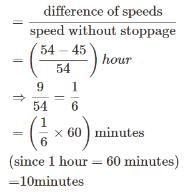UPSC CAPF Paper 1 Mock Test - 9 (General & Mental Ability) - CDS MCQ
30 Questions MCQ Test - UPSC CAPF Paper 1 Mock Test - 9 (General & Mental Ability)
What is the name of the global declaration adopted by the United Nations that outlines human rights?
Which principle of foreign policy advocates for mutual respect for territorial integrity and sovereignty?
Which of the given rivers is a tributary of the Ghaggar River?
An industrial system consists of inputs, processes and outputs. A list of items with respect to the textile industry is given below. Which one cannot be classified under inputs?
Cotton, Labour, Weaving, Land, Power, Communications, trade, Transport cost
On what date was World Soil Day formally established as a global awareness-raising platform by the UN General Assembly?
Who has been appointed as the Executive Director of the Asian Development Bank (ADB)?
'Indian Historical Records Commission', which was in the news recently, is functioning under which Ministry?
One way that you can recognize that a force is acting on an object:
Weight of a body on earth is 48 N; its weight on moon is
New plants can be produces without the help of any reproductive organ by:
What will be the greatest possible length of the planks, if three pieces of timber 42 m, 49 m and 63 m long have to be divided into planks of the same length?
Pairs of natural numbers whose least common multiple is 78 and the greatest common divisor is 13 are:
Excluding stoppages, the speed of a bus is 54 kmph and including stoppages, it is 45 kmph. For how many minutes does the bus stop per hour?
What is the average of all the numbers between 5 and 78, which can be divided by 6?
Consider the following regarding Faxian's account of India.
1. During his visit, stupa veneration was not practised in India.
2. He frequently mentions the name of Chandragupta II in his works.
3. As per him, Buddhism was established mainly in the Gangetic valley.
4. He was looking for better copies of Buddhist books than were available in China at that time.
Select the correct answer using the codes below.
Statement-I: The decline of Buddhism in India was significantly influenced by its adoption of ritualistic practices and the corruption within Buddhist monasteries.
Statement-II: The deviation from Buddhism's original teachings of simplicity and direct spiritual practice led to a dilution of its appeal among the masses.
Which one of the following is correct in respect of the above statements?
Which one of the following was the prevalent method of the disposal of the dead in the Vedic period?
During the reign of which great Mughal was tobacco introduced in India?
Consider the following statements.
1. The Calcutta Madrasah and the William College were designed to provide a regular supply of qualified Indians to help the administration of law in the Company's court,
2. The knowledge of classical languages and vernaculars was useful in correspondence with Indian states
Which of these statements are correct?
Consider the following statements.
1. The Swadhyay Parivar is a devotional movement started by Pandurang Shastri Athavale to promote the study of the ‘self’.
2. The Swadhyay Parivar movement lays exclusive emphasis on one’s own faculty for understanding the true nature of things and does not promote scriptural knowledge or studies.
Which of the above is/are correct?
How many delegates attended the first session of the Indian National Congress which was presided over by W.C. Banerjee?
What was the main purpose of introducing the Goods and Services Tax (GST) by the Modi government?
Directions: Read the given information carefully and answer the questions given beside:
A certain number of people are sitting in a row watching F1 racing. All of them are facing towards the south direction. The distance between any two adjacent persons is the same.
The number of people sitting between A and C is the same as the number of people sitting between X and C. At most 25 people are sitting in a row. X is an immediate neighbour of D, who sits on one of the ends. Two people are sitting between A and Z. The number of people sitting between D and C is the same as the number of people sitting between C and Y. C sits fourth to the right of Z. The number of people sitting to the right of A is the same as the number of people sitting to the left of Z.
Q. How many seats are there in a row?







 Hence, Case 1 is the final arrangement.
Hence, Case 1 is the final arrangement.















